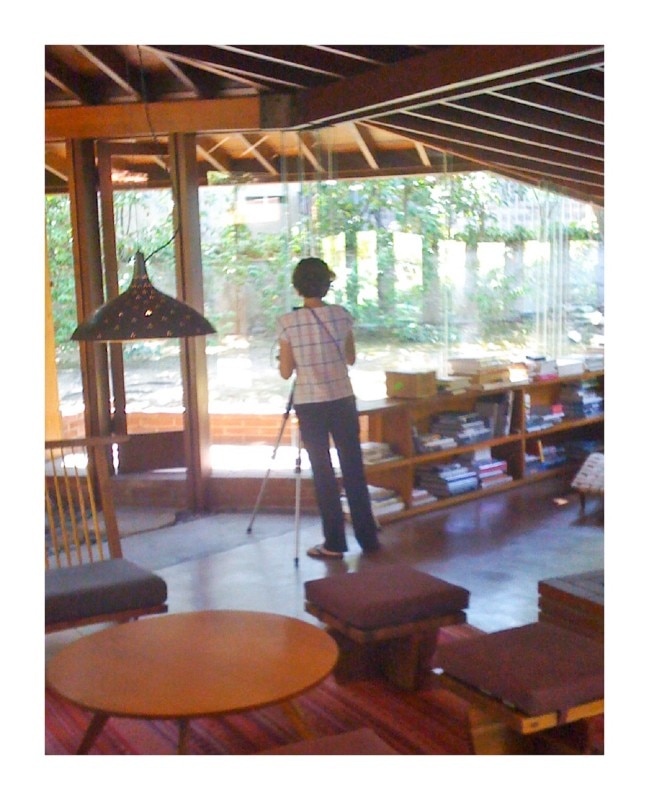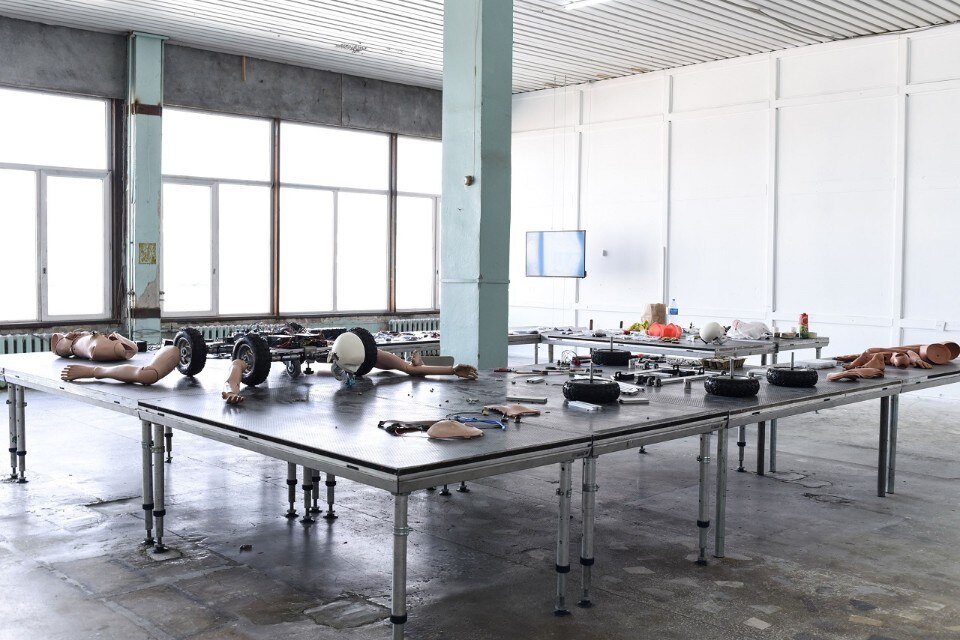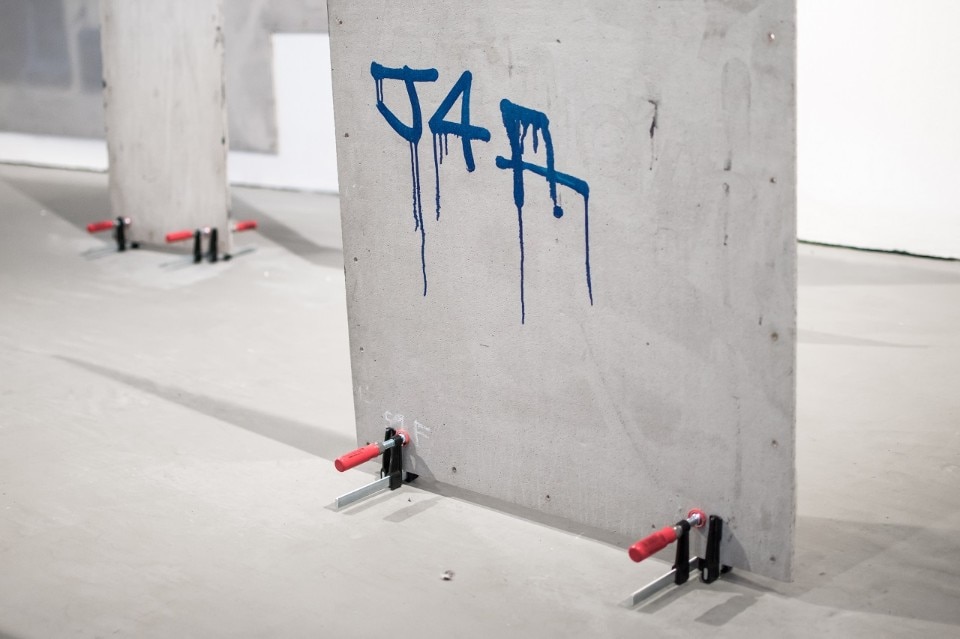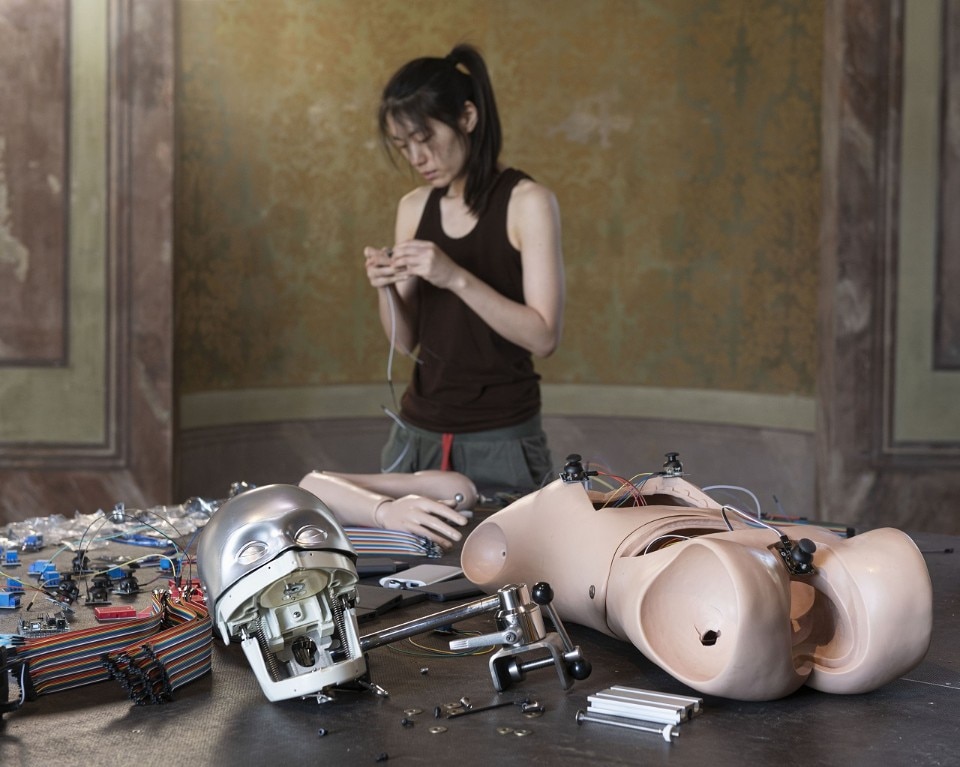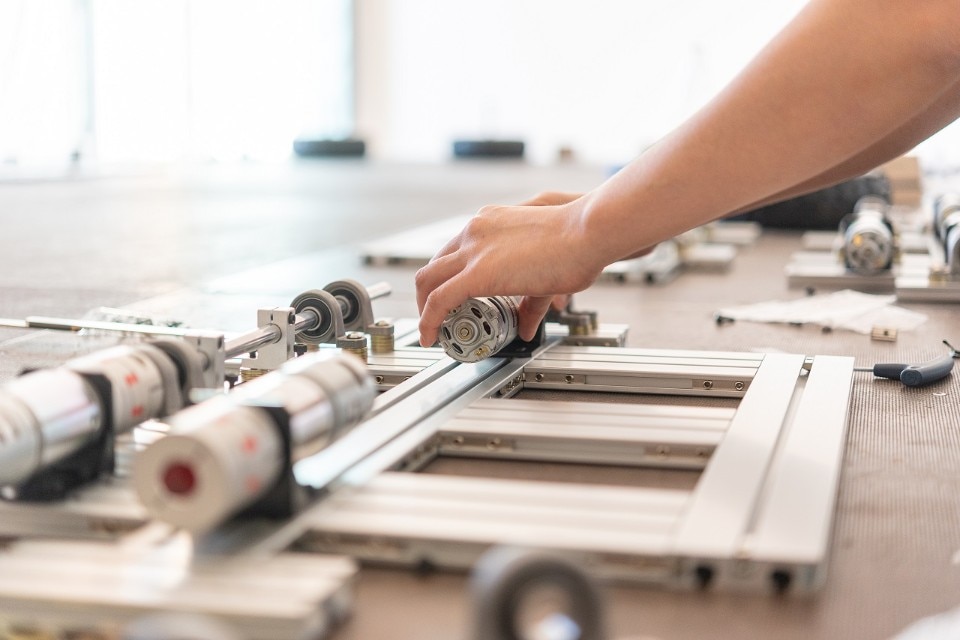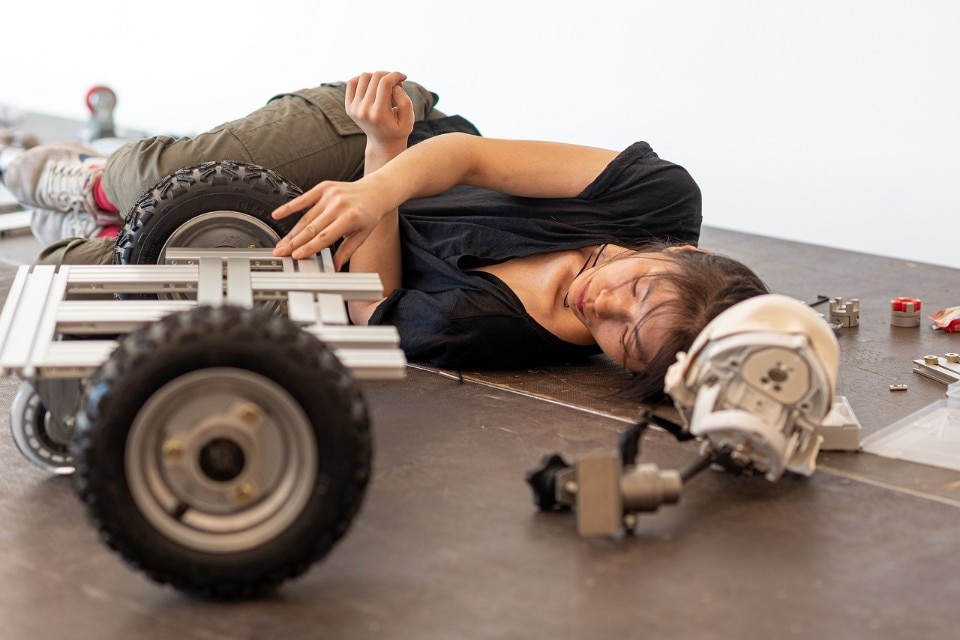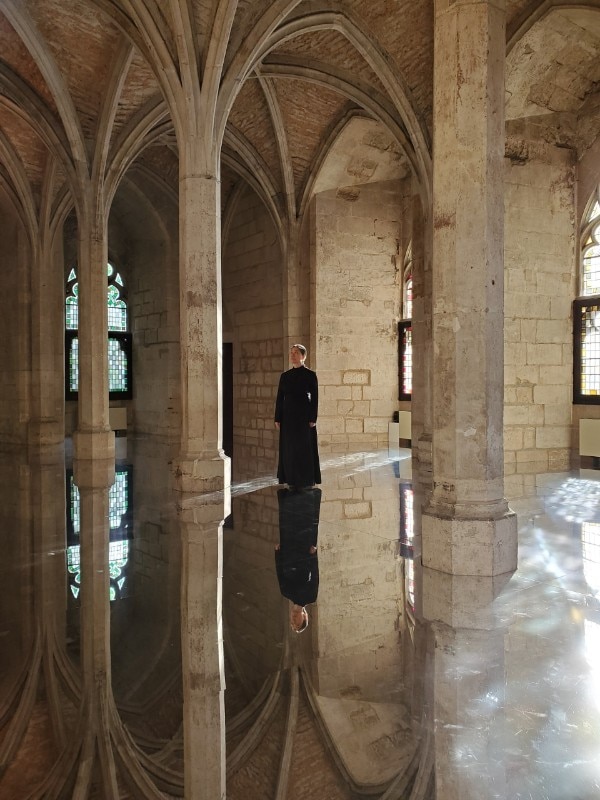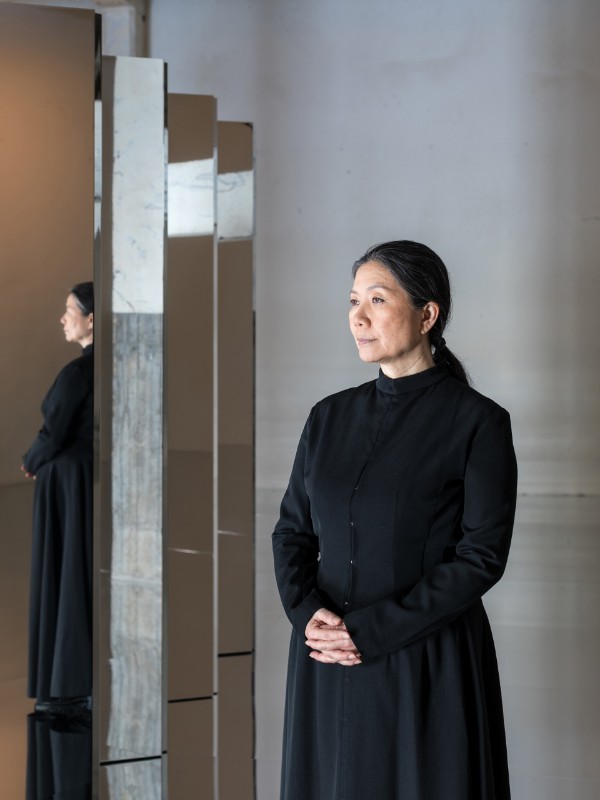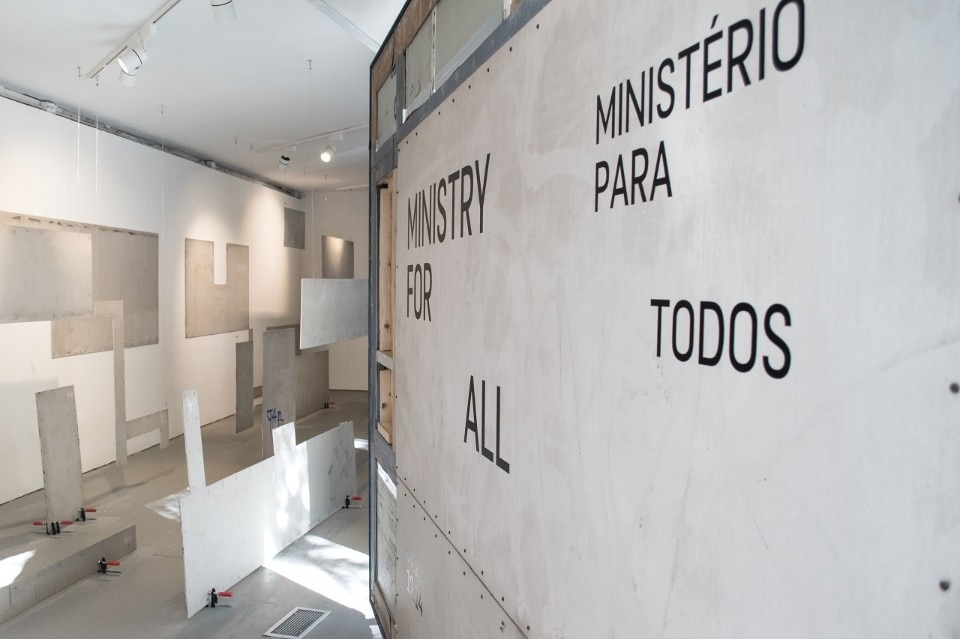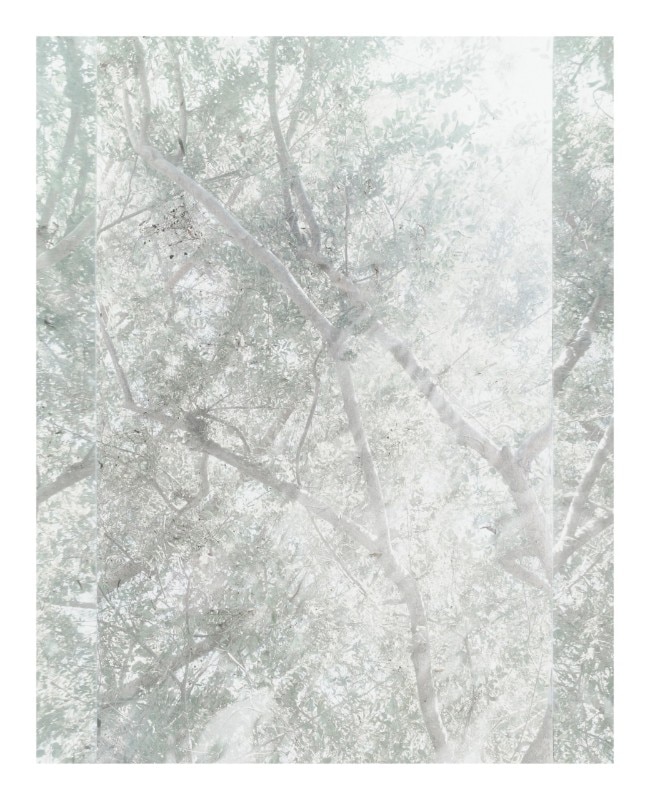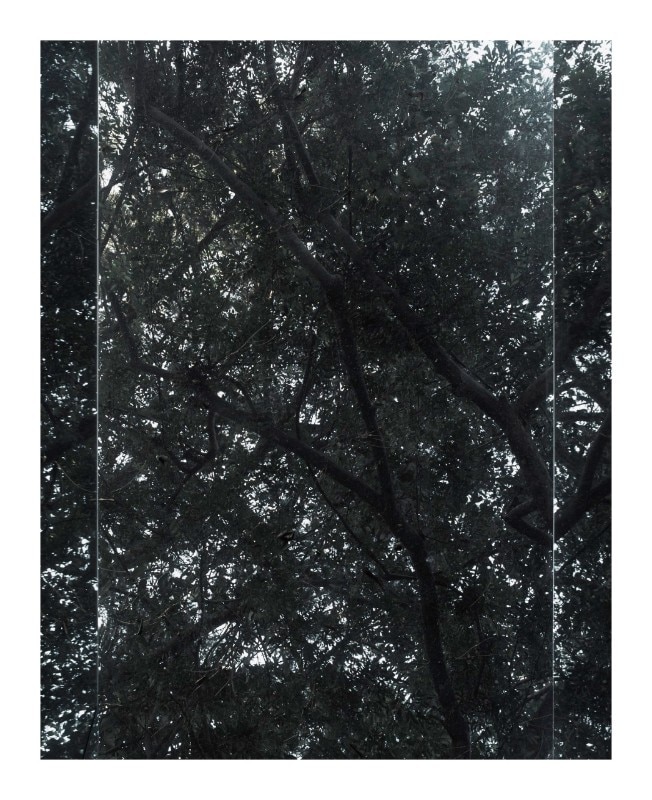Self-confined, quarantined, isolated or voluntarily secluded, four established artists, mastering four different practices, talk about how their spatial and temporal dimensions have inevitably changed. From Sao Paulo to Seoul, to New York, Marcelo Cidade (1979, Brazil) a sculptor, Geumhyung Jeong (1980, South Korea) a performer, Kimsooja (1957, South Korea) an installation creator and Luisa Lambri (1969, Italy) a photographer, answers to the same four answers.
Covid-19 pandemic is enhancing their whole concept of stripping everything down to the bare necessities and exposing the structure of things that they took for granted. The idea of being locked up in their societies or their countries is focused on the individual universe in their minds. And the way they put it together could represent a way of thinking about the size and the rhythms of their – and our – spaces.
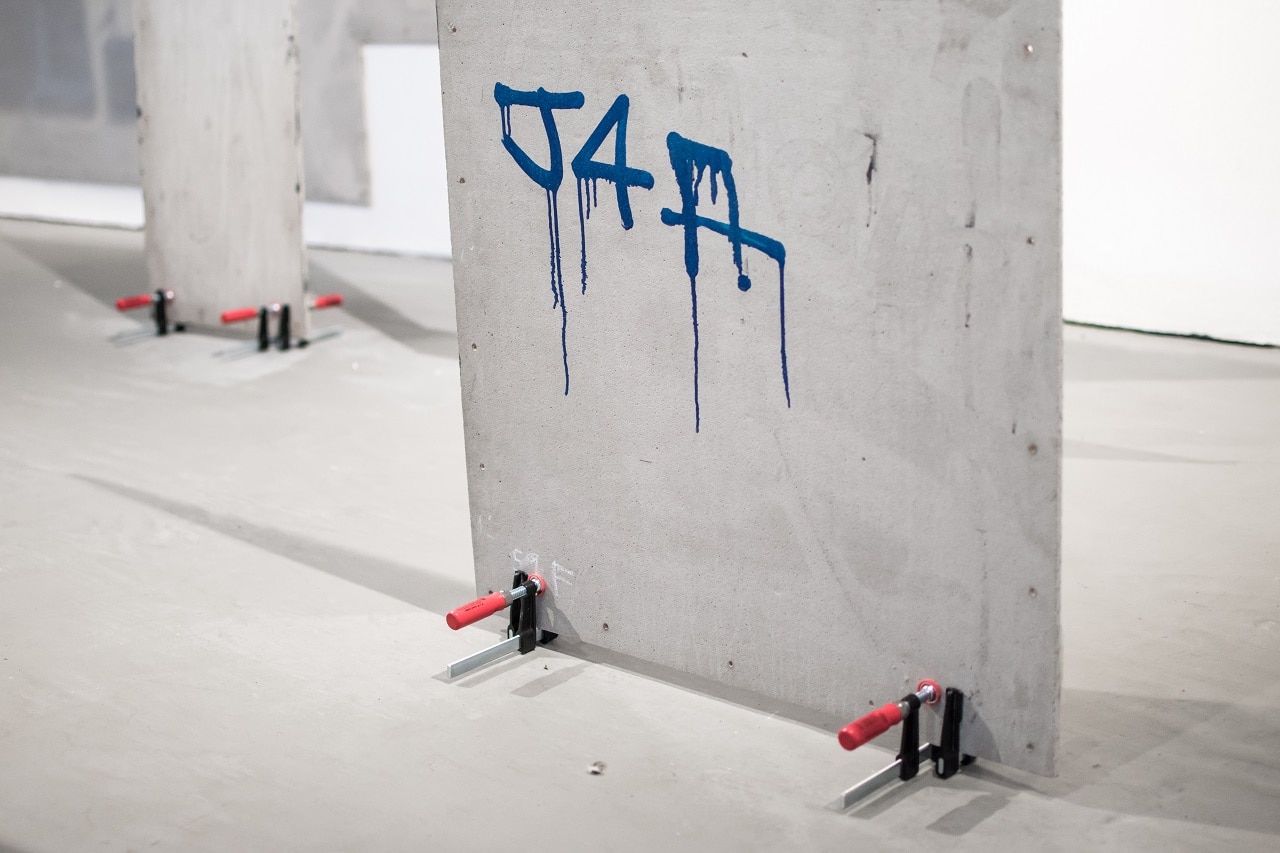
Following the actual quarantine government decree, how are you organizing your shelter as a space for composing and re-composing your ‘normality’, also in terms of studio-space?
Marcelo Cidade: Here in São Paulo, decisions about the progress of the epidemic have been determined slowly, while in Italy the pandemic was already spreading to an emergency situation, here it took a little longer to have the awareness of a complete lockdown. We’ve been in isolation for almost a week. My studio is only 10 minutes by bike from my house, so during the last week it took few times to get some books and materials to continue working at home. At home, I limited my space to a table, where I draw, study and take notes for future projects. Trying to keep a certain “normal” atmosphere.
Geomhyung Jeong: In the process of my creation, I usually do many parts of the work at home, using my lap top, before and after the physical works of making installation or performances at the venue of the presentation. As long as I am doing the works that I usually work at home, I wouldn't feel very different about staying at home itself, for a while.
Kimsooja: Indeed, the current pandemic turmoil presents an unprecedented and complicated time for me in organizing my personal and professional “normality.” My long-time nomadic life has switched to home stay since last year due to my family circumstance, and the COVID-19 quarantine at home overlaps with this. These two new conditions seem similar physically, but arise from two totally opposite positions; one is volunteered, while the other is forced. Therefore, the psychology of staying and working at home under this ‘new normality’ is quite interesting and contrary to our previous idea of co-existence. In terms of the ‘home’ as a ‘studio’ space, I find it rather a laboratory and a source of inspiration, as my work has a lot to do with my personal and domestic life, although I almost never personalized it till now. Since the 90s I have been considering my body as a studio on the move. Now, losing mobility allows me to focus on the inner world while keeping an eye on the outside world. I feel I am rather confined within a larger world.
Luisa Lambri: My laboratory and archive are in Germany, and I usually take photos on location, so traveling is an essential part of my practice. It is also one that I enjoy very much and one part that I have been missing. I actually never had a studio. I have always worked at home on my computer, or anywhere I can be on my own. The current health emergency has not altered the way I work in that sense. I have been feeling much more anxious than usual but also found comfort in knowing that this is a collective experience that actually brings people together and the outcome will also be unexpected and I think very positive. As far as staying at home is concerned, it is usually much harder for me to leave the house rather than staying in, so that is not very difficult for me.
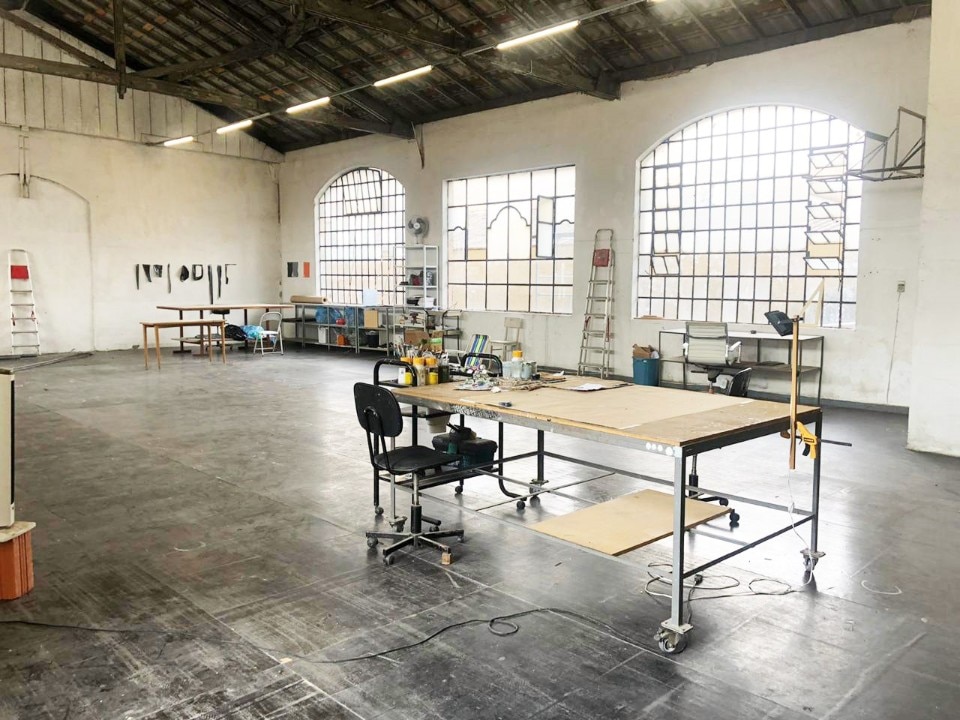
How time and space will be suspended for you? And which kind of new definition they could acquire throughout your artistic practice?
Cidade: To be an artist in a country like Brazil, nowadays, with the dis-government that we actually are experiencing, forces us to deal with the issues of spatial and temporal suspension. Since the last elections, all people working with art and culture have been treated with contempt by the government. To be an artist here is to be considered as part of a marginal community. I believe that my role as an artist and as a citizen is to create critical situations and reflections on this state of exception, which I hope could be temporary.
Jeong: My recent exhibition “Upgrade in Progress” at Fondazione Modena Arti Visive that opened on 6 March was temporally closed since 8 March including the performance scheduled during the exhibition. I had to leave Italy unlike my plan to stay longer to continue working at the installation venue using the space as my laboratory of the robots in upgrading process. I was not ready for having pause and distance suddenly from the work that I just finished but still needed to practice to develop the performance, playing with the new machines that I made. I was a bit worried of losing the right pace on this work. Because it was stopped in the middle of excitement, when I finally began to see the result after taking a lot of time to build it. But then I realized I shouldn't be worried about it yet. The robot that I made, called Homemade RC Toy, could be like a character from a story of a person who tries to make a friend building a robot by herself alone at home. I just imagined making another one at home during this time and play with it.
Kimsooja: A physical limitation in mobility makes me contemplate our inner world while keeping our eyes on the whole world. We are imprisoned by the mobility of our time. It is contradictory, but perhaps this might be a way space and time exceptionally subvert their continuity to strike a balance for the whole as a living nature.
Lambri: As that’s probably the case with many other artists, the majority of the projects I had been working on during the last months have been cancelled or postponed indefinitely, or acquired a new digital life, so there have been quite a few changes and adjustments to make. My exhibition at Padiglione d’Arte Contemporanea in Milan is still scheduled to open at the beginning of July though, so I have continued to work on that even if in a different form than previously planned. This is definitely a time to pause and reconsider what has often been taken for granted, which isn’t hopefully necessarily a loss but a good thing to do as well.
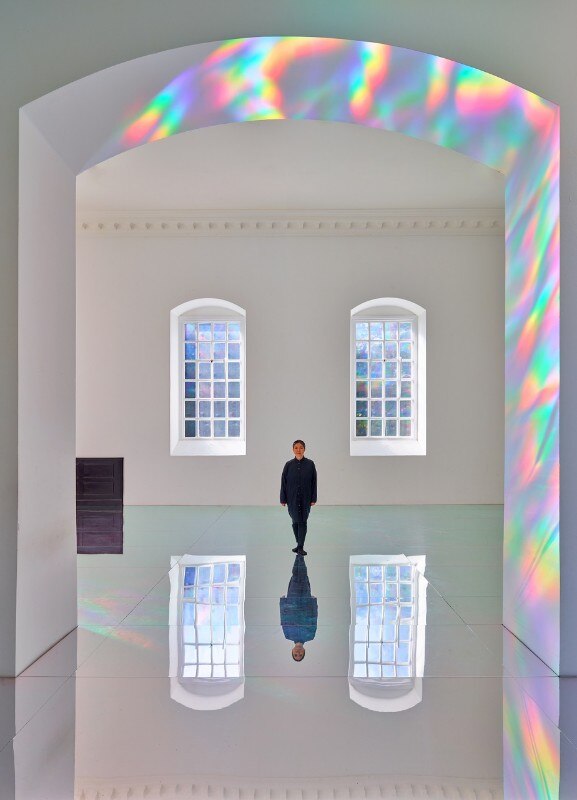
By forcing the third-dimensionality into few squared meters, which kind of elements, sentiments or memories do you think, could be emerging in the next weeks?
Cidade: Being physically stuck at home, it is a way of rethinking my actions, using imagination, letting creativity take a revolutionary course in my daily rituals. I’m trying to reinvent life in a more lucid way, reinforcing certain ideas of collectivity, reflecting on the concept of altruism. I draw more, read more and I miss social life together with the freedom to come and go.
Jeong: I think I would begin to feel guilty about my general habits if this situation could continue. There are many problems in my life that I have been postponing to solve because I had reasons to excuse myself, while I was busy concentrating on my works and tours. But such a free time, due to several cancellations of my upcoming performances, made me again face my own problems in my life. I see myself still trying to avoid thinking about it.
Kimsooja: While we feel physical limitation, this gives stress to our mental and physical freedom, it opens up a vast imaginary space and time; to pose, re-think, re-evaluate where we are, and where and how to move forward. This phenomenon brings me to reflect on our corporeal reality, the vulnerable state we live in, the ecology of life, going back to nature, and a need to reconsider true value systems of humanity, as well as of social hierarchy. I think this pandemic will definitely be a learning experience for the egocentric contemporary society that only moves fast-forward without much reflection on fundamental values, on others, or on other species – or on the connectivity which allows us to live globally, at the cost of losing invaluable human lives.
Lambri: I’ve always liked traveling and often lived in different houses and countries, and also in different living conditions. Even while living in small apartments I have never felt particularly confined, as it is our inner experience of places and circumstances that matters the most. On this particular occasion, because of the nature of this emergency, I have been taking care of and enjoying the relationships with my closest family members, both two and four legged ones. It is too early to say what the consequences of this emergency will be and how they will manifest in life and art. For now, trying to be present and caring, and allowing oneself to be creative, is probably enough.
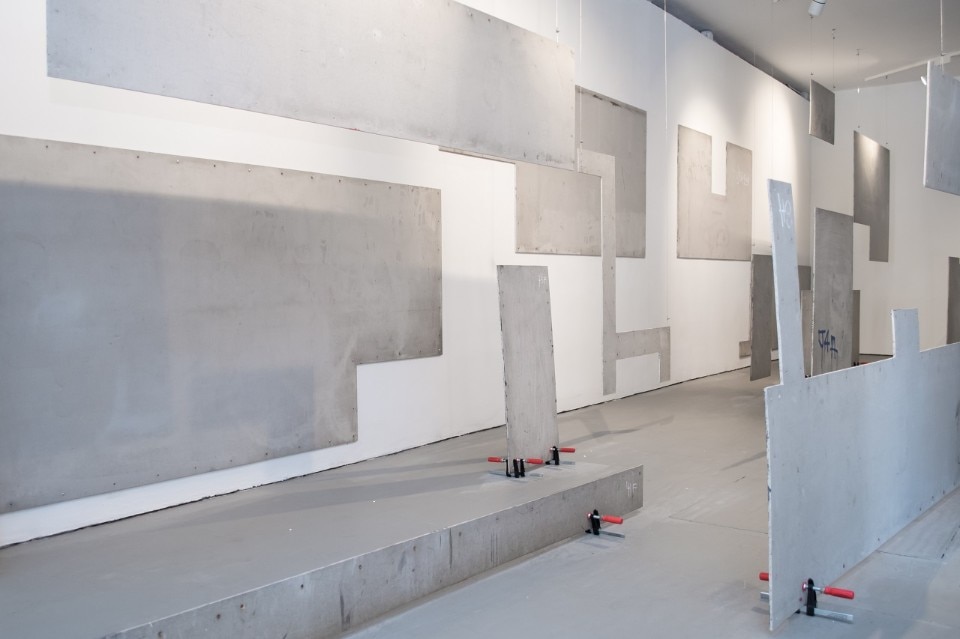
Could you please express a message for all of the artists who are forced staying at home, modulating their daily life spaces as a studio?
Cidade: I wish everyone could think and reflect on what we are doing, and where we want to be in the near future. Meditating is, perhaps the best solution.
Jeong: I guess some artists could enjoy self-isolation working at home, depends on what kind of arts they create, but the real difficulty for all of us would be the money issue. Especially the performing artists, who earn money from events. I hope all of the artists who struggle can get some financial supports from their community or their governments.
Kimsooja: I believe artists and art world should stop for a moment and meditate on who we are in this inevitable and fundamental circumstance and take a deeper breath in order to have elastic perspectives. I am sure this limit of mobility and spatial definition gives many artists profound understanding on the human condition, urging an abundance of creativity and criticism on commercialism and this market-oriented era.
Lambri: Artists are very resourceful. Making art and being in the company of art is healing in itself and a way to overcome hardship. It is also a solitary practice, so while being sensitive, artists are also probably particularly resilient in the face of adversity.
